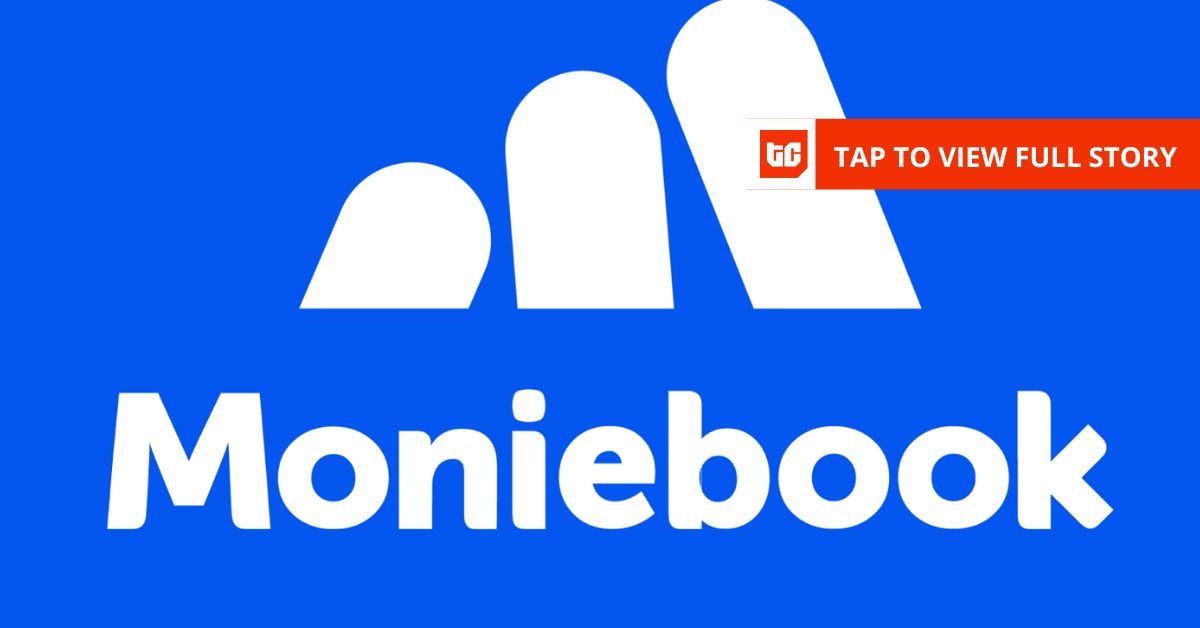On August 7, I watched a cobalt-blue Moniepoint point-of-sale (POS) device do something it had never done before. With a few taps on the touchscreen, it logged the sale of a bottle of water, processed the payment, updated the stock count, and printed an invoice and a payment receipt — all in one go.
This seamless reconciliation of payment and inventory is a major challenge for Nigeria’s retail economy. The gap between a “sale” and a “payment” is a common source of human error, cooked books, and fraud. Startups like Orda, Mira, and OmniRetail, as well as Paga’s new software Doroki, have tried to solve this. Seven months after exclusively reported that Moniepoint was quietly working on a POS system to solve this problem, the fintech unicorn has launched Moniebook, a software that makes inventory reconciliation as instantaneous as payment itself.
For most merchants in Nigeria, POS machines—close to nine million—do not record sales at all; instead, they are payment terminals, little more than ATMs for card transactions. Staff log orders separately—in notebooks, on a desktop, or in an app—and then process payment on the POS. At the end of the day, managers must painstakingly match card receipts to sales records.
Solutions to this problem fall into two main categories. Horizontal SaaS platforms, like Moniebook, are designed for a wide variety of merchants. Their strength is broad applicability and quick onboarding, but they may lack the deep customisation needed for complex businesses. In contrast, vertical SaaS platforms, such as Orda and Mira, are purpose-built for specific sectors. They offer complex, unique features that cater directly to their specialised users, providing a level of depth that a horizontal solution cannot match.
Moniepoint believes its Moniebook platform can solve this in a way that existing popular players have not. “You might think a bookkeeping tool solves the problem, but without integrated payments, you’re still crunching numbers manually,” said Babatunde Olofin, the managing director of Moniepoint’s microfinance bank.
Moniebook is already seeing in‑market validation. During a tightly managed beta phase, over 4,000 businesses put the software to work. The diversity of users pleasantly surprised the product team, Oluwole Adebiyi, Moniebook’s head of product, shared. Restaurants ran hundreds of daily orders through it; roadside shops relied on it for basic stock control; supermarkets tested it on long checkout lines; fuel stations used it to log every litre pumped. There was also a toll gate somewhere in the mix.
Adebiyi, Moniebook’s head of product, says the toll gate was the most surprising user. The operator treated each vehicle type as an “inventory item”: SUVs, trucks, buses. As motorists paid their tolls, those “items” were scanned and logged like supermarket products.
“It [gave them] control,” Adebiyi recalled. “No way for cashiers to bypass payments. And the owner suddenly had reports they had never had before, like knowing only two trucks passed this month. That kind of data didn’t exist for them before.”
How the POS works
There are two core components: the back office dashboard, where owners and managers control inventory, pricing, and reporting; and the POS register interface, used by front‑line staff to process sales and collect payments.
On the dashboard, a merchant can add an item in seconds: name, category, unit of measurement, barcode, cost price, selling price, and opening stock. Items can be standard (like bottled water), variants (clothing in multiple sizes and colours), or bundled products (a Christmas hamper containing separate goods). Fuel stations get a different interface that calculates litres from a naira amount, removing guesswork for attendants.
Barcodes can be scanned directly with the POS camera or an external scanner. If a merchant sets low stock thresholds, Moniebook sends an automatic alert when quantities fall below that number. Every inventory change and the staff who made it are recorded before‑and‑after counts.
From the register side, cashier logins are tied to individual PINs and roles — administrator, accountant, auditor, or cashier — controlling access and creating an audit trail for every action. Once items are scanned or selected, the total amount is locked into the transaction.
“Most of the problems businesses have are either the cashier types ₦3,000 instead of ₦300, or they bring their own POS and take money on behalf of the business,” Adebiyi said. “Here, the sale is only completed once payment is received, and it’s for the exact amount.”
The final touch is the printer; the POS produces a single paper slip combining the sales record and the payment receipt. On the back office dashboard, the transaction appears instantly with full detail: item breakdown, staff name, branch, payment method, and transaction reference.
Beyond basic sales, Moniebook includes expiry tracking for perishables, inventory valuation showing total stock value and potential profit, customer groups with targeted fixed or percentage discounts, multi‑branch reporting, and offline capability that syncs as soon as the internet returns.
Making “monie” from Moniebook
Moniebook will be sold on a subscription basis. The Core plan is ₦6,000/month for one device and one branch, with additional branches at ₦4,500 and extra POS devices at ₦2,500 each. The Pro plan starts at ₦8,500/month, with extra branches at ₦5,500.
Importantly, Moniepoint leases its touchscreen POS terminals rather than selling them outright. This keeps the barrier to entry low for small merchants and makes hardware upgrades simple. An existing Moniepoint merchant can swap a standard terminal for a fully Moniebook‑enabled version without paying for a new device. That’s a stark contrast to competitors like Mira, whose hardware can cost hundreds of thousands upfront, plus subscription and transaction fees.
“It becomes affordable for everyone out there… from the single‑shop owner to multi‑branch merchants,” Adebiyi said.
A vision beyond the terminal
For Moniepoint, the ambition is bigger than POS subscriptions. While the company targets 100,000 active merchants by year‑end, it sees Moniebook as an engine for its fast‑growing lending business, which already represents about 20% of revenue.
Until now, the creditworthiness of merchants has been based on transaction volumes and occasional site visits. A pre‑qualification tool flagged candidates for loan offers, but risk modelling was limited. Moniebook achieves this by sending real-time operational data to the credit team, including transaction counts tied to specific products, inventory turnover rates, margin health, and peak sales hours.
Olofin illustrated this with an anecdote about a restaurant that received a loan and saw rapid growth, attracting scrutiny from a law enforcement agency. Moniepoint’s transaction data validated the business’s legitimacy, but with Moniebook, she says, such validation would be even more seamless.
“With Moniebook, we probably don’t even have to go into the store physically to check. You actually have the data.”
The same integration is a boon for fraud prevention and compliance. For compliance officers, Moniebook provides a kind of line‑by‑line, regulator‑ready record that banks often pay third parties to compile.
“They would have paid other people for this kind of access,” Olofin said. “Now they get it from within our system.”
Building inside-out
Since its beta launch, the Moniebook team has grown from 12 to 60 people —product managers, engineers, designers, data specialists, growth marketers, and support staff. The group operates like a small startup inside the fintech giant, with its roadmap and targets.
“One way to think about how we build products at Moniepoint is that each product is like a tiny company within the company,” Olofin said. “It has all the resources it needs to move fast, without getting slowed down by the bureaucracy of a much bigger organisation.”
For Adebiyi, whose startup, Grocel, was acquired to build Moniebook, that autonomy made working at the unicorn fintech worthwhile.
“To win with inventory systems in Nigeria, payments need to be solved. Moniepoint had solved payments. I don’t see any other company I could have done this with.”
Moniebook operates in a competitive market, but it plans to leverage its existing nationwide POS network. This strategy, similar to Paga and OmniRetail’s acquisition of Traction Apps, allows Moniepoint to quickly onboard users. While competitors like Paga also have their networks of POS terminals, Moniepoint holds a significant advantage in distribution and customer relationships.
Consequently, the deeper a merchant integrates with Moniebook—using it for payments, inventory, reporting, and credit—the “stickier” the service becomes. This is because the cost and risk of switching to a different provider in the future become much higher.
Whatever the case, there is a clear winner: the merchant-users. The increasing push to develop and scale the merchant stack —payments, operations, data, and credit—is good for SMEs. Bemigho Awala, the company’s media relations manager, insists that this is the philosophy guiding Moniepoint’s moves.
“It’s about progress for the brand, but also for the mom-and-pop shops, supermarkets, and other businesses that run on our rails,” said Awala.
If this new POS becomes as widespread as Moniepoint’s payment terminals, the hiss of printed receipts will become the new sound of business as usual.
Editor’s note: This article has been updated with additional details about Moniebook’s competitors.
Mark your calendars! Moonshot by is back in Lagos on October 15–16! Join Africa’s top founders, creatives & tech leaders for 2 days of keynotes, mixers & future-forward ideas. Early bird tickets now 20% off—don’t snooze! moonshot..com











